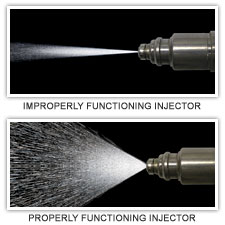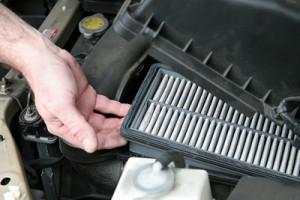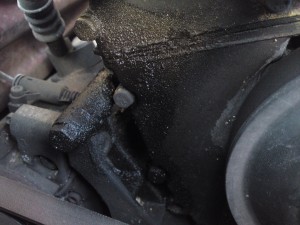Understanding Cooling Fan Clutch Concern
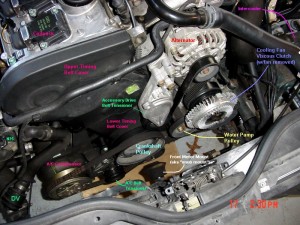 As a car owner, it’s essential for you to know some car parts, their uses and how you will be able to perform quick troubleshooting as well. The cooling fan clutch is one of the most important parts of the car. As the engine run, it becomes hot and it should be cooled using the clutch fan engine to prevent overheating problems. Clutch cooling fan is important especially in regulating the engine of the car and its temperature. This fan will work at a preset temperature so if the engine hasn’t reached the preset temperature, the fan will stay off and will not work using the energy of the car. Drivers shouldn’t worry because it will not consume and add up to the huge power consumption of the car.
As a car owner, it’s essential for you to know some car parts, their uses and how you will be able to perform quick troubleshooting as well. The cooling fan clutch is one of the most important parts of the car. As the engine run, it becomes hot and it should be cooled using the clutch fan engine to prevent overheating problems. Clutch cooling fan is important especially in regulating the engine of the car and its temperature. This fan will work at a preset temperature so if the engine hasn’t reached the preset temperature, the fan will stay off and will not work using the energy of the car. Drivers shouldn’t worry because it will not consume and add up to the huge power consumption of the car.
During the older times, the fan was attached to the engine of the car which requires energy consumption coming from the car. Now that modern technology is here and the demand for energy is more rampant, a fluid coupling was made intentionally to enable the fan to stay off as long as the temperature of the engine is cold and doesn’t require help coming from the fan. As the engine of the car heats up, the fan works faster too. These days, couplings are also known as clutch fan. If you would like to check if the clutch fan of your car is functioning accordingly, here is some useful information that you can use:
- First thing that you can do is to raise the hood of the car and check if the fan clutch is fitted and doesn’t have oil and dirt. If there is a liquid that can be seen on the fan, there must be a leak and the fan should be changed.
- You need to turn the fan to see if it’s properly working, you can do that by checking if the fan is spinning freely or if it is resisting. The fan should only resist when the weather is cold and when the engine is cold. If you see that the fan is locked up you need to change it because it shouldn’t be locked up there. It should be easily moved.
- You need to move the fan up and down, if you are not having a hard time, there is nothing to worry about the fan. If you see that the pump bearings are torn, it should be changed.
From time to time, you need to inspect some car parts to see if they are properly functioning or if they need to be changed.
Recognizing Late Ignition & Timing Problem
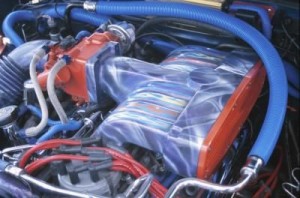 If you own a car, you need to become familiar with its parts so that when something bad happen, you can easily know where the problem is actually coming. Ignition is an essential part of the car because this part includes several parts such as the spark plugs, wires and ignition coil that plays vital role to the proper function of the car. Ignition is responsible with the distribution of every spark plug of fuel mixture to the cylinder of the car. If the ignition is not in its proper timing or functioning, problems will arise because the engine will lose its proper power. Some common ignition problems that you may encounter are as follows:
If you own a car, you need to become familiar with its parts so that when something bad happen, you can easily know where the problem is actually coming. Ignition is an essential part of the car because this part includes several parts such as the spark plugs, wires and ignition coil that plays vital role to the proper function of the car. Ignition is responsible with the distribution of every spark plug of fuel mixture to the cylinder of the car. If the ignition is not in its proper timing or functioning, problems will arise because the engine will lose its proper power. Some common ignition problems that you may encounter are as follows:
- Engine is missing the idle mode can be categorized as an ignition problem. This is when the engine is not actually failing but just missing out or doesn’t shoot up right away. It can be the spark plug or the cylinder of the car. If the engine starts to miss out during an idle mode, the ignition timing must be in its improper timing. It could also be the distributor that has been damaged. It can also be unnecessary or extreme movement inside the shaft that causes the ignition timing to work in an inaccurate manner.
- When the engine misses out within a speed just atop of the idle mode, it may be missing out or you need to check the engine timing. It may be the cause of the problem but if you see that it’s not, then you need to check the distributor. The distributor’s cap may be damaged and it might need to be replaced. You also need to check the rotor if it is also worn out because it may also be one of the culprit. The problem may depend on the car and its model so it may be complicated to check where the problem is coming from. If your car model is older, there must be the point system that may also cause problems, or it can also be the ignition coil.
- Check the exhaust tract if the engine causes the unburned fuel to explode inside the exhaust tract. This is commonly known as backfiring and sometimes, it can be because of the carburetor though at times, vacuum problems and leaks or valve lash may also be the culprit because of incorrect timing that has been set in the ignition. If you are sure that your car is suffering from backfiring, you need to check for the engine timing again and see if the distributor is bolted in a very secure manner to the engine of the car. Lose bolt can cause improper movement which may cause ignition timing problem.
You have to inspect it from time to time to know where the problem comes from.
Learning and Understanding Oxygen Sensor Problems
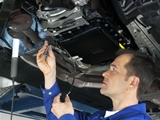 The car has its computer system that is specifically assigned to function accordingly. The oxygen sensor is hooked to the computer system of the car not just to keep tract of the movement but also to adjust the air to fuel ratio pumped to the engine. The oxygen sensors are disposable so you will not be able to find used sensors at the market that will be sold for half the original price. Faulty sensors can lead to troubles later on and it cannot be fixed as well. What you can do is to change it to make your oxygen sensors run smoothly once again. This article will help you determine and fully understand some oxygen sensor problems that are bothering you.
The car has its computer system that is specifically assigned to function accordingly. The oxygen sensor is hooked to the computer system of the car not just to keep tract of the movement but also to adjust the air to fuel ratio pumped to the engine. The oxygen sensors are disposable so you will not be able to find used sensors at the market that will be sold for half the original price. Faulty sensors can lead to troubles later on and it cannot be fixed as well. What you can do is to change it to make your oxygen sensors run smoothly once again. This article will help you determine and fully understand some oxygen sensor problems that are bothering you.
- You can start by finding the oxygen sensor that needs to be changed. For some older model cars, there is only 1 single oxygen sensor that needs to be changed while newer car versions have 2. You can easily identify oxygen sensors because of the golden wires.
- What you will do is to detach the wires coming from the oxygen sensors along with its connection to the electrical system as well. You need to be very careful because improper disconnecting of the wires may cause more serious damages later on.
- If you find it hard to remove the sensor since heat can contribute to the sensor being stuck in place, you can use a wrench to loosen it up. It needs force to unscrew it but always be very careful because you may also damage other parts of the car that are beside the sensor.
- With new sensors on hand, you need to put some oil on it before you screw it to the car. This will make sure that the new sensor will work well and will go along with the wires.
Oxygen sensors are responsible in monitoring the gases that the car emits every time you use the car. It may be costly so you need to make sure that the oxygen sensor is really the problem or else, you might be spending money for a false part of the car. There should be increase in gas mileage or black smoke that is unusual for you to determine if the oxygen sensors are really the problem of your car. Simple information may help you determine if you are really on the right tract.
Learn More about Regular Car Oil Change for Your Car
 Regular oil change is a must for every car. Do you know that the motor oil of the car should be changed regularly because that is the life and blood of the engine? You shouldn’t disregard the oil of the engine since it is a requirement to change it regularly. The right use of oil will keep your car in good running condition regardless if it is old model or new. You need to invest in proper maintenance of your car to make it last for years. Buying a new car part is so expensive, more so buying a new car so what you can do is to just properly maintain your car to make sure that every part is ok and there won’t be any problem too. You can easily change your car’s engine oil and it can be through the following:
Regular oil change is a must for every car. Do you know that the motor oil of the car should be changed regularly because that is the life and blood of the engine? You shouldn’t disregard the oil of the engine since it is a requirement to change it regularly. The right use of oil will keep your car in good running condition regardless if it is old model or new. You need to invest in proper maintenance of your car to make it last for years. Buying a new car part is so expensive, more so buying a new car so what you can do is to just properly maintain your car to make sure that every part is ok and there won’t be any problem too. You can easily change your car’s engine oil and it can be through the following:
- First thing that must be done is to gather stuffs that must be used to change your car’s engine oil. It is a must so you can easily reach out for things that you will need along the way. You need to park the car in a place where the oil can be drained adequately. Don’t put your car on ramp if you don’t have adequate oil pan where the drained oil will be placed.
- You need to drain the oil of your car’s engine and check if there is no oil left after a few minutes. You need to make sure that all the oil has been removed so that there will not be old oil to mix up with the new oil that you will put on. When the old oil is gone, you need to change the drain plug or gaskets too.
- When you are done draining the old oil, you need to replace it with a new one. Take off the oil filler cap on the engine top and then place the new oil using a funnel. Warm up your engine and check if the oil level of the car is suitable enough.
Its best to warm up the oil first so that you can drain it easily but makes sure it’s not in its boiling level so you will not be burned accidentally by the bursting oil. You can use rages in different areas of the car to make sure that oil spills won’t bring you harm later on.
Regular Rings and Valve Leak Check Prevents Leak
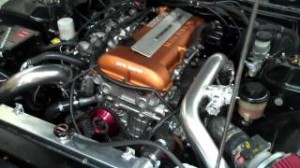 Regular Rings and Valve Leak Check Prevents Leak
Regular Rings and Valve Leak Check Prevents Leak
Owning a car require responsibility because you need to check your car from time to time especially if you will be going for a long ride. Regular ring and valve check can help prevent leaks that may lead to major damages to your car later on in life. Engine valves plays vital role in any type of car. If valves are not properly placed or the rings are not properly seated, it may cause the car to consume more oil. A compression test must be done to check for such issue. Checking ring problems and valve leaks are very important to prevent more serious problems later on. This article will help you find out how to check for bad rings and valve leaks from your car.
Bad rings
- You can check for bad rings by pulling the spark plug wires, you can do that using a wrench and with the help of spark plug socket.
- Now screw the tip of the compression gauge of any spark plug openings of the cylinder head.
- You need to block the opening of the throttle through assistance coming from the accelerator pedal. You need to step on it down to the floor of the car which will enable the engine to have enough supply of air.
- You need to ask someone to turn on the engine while the accelerator pedal is down. You need to take note of the readings of the gauge and then do the test on the rest of the cylinders that you have in the car. The reading should be about 130-160 pounds per square inch for every cylinder.
- You will know if the rings are properly working by seeing the cylinder readings within the range required. If there is a low reading, you need to just put a small amount of water into the cylinder using a spray bottle. If after putting on some water the reading is still not good, you need to change the rings because they may be worn out and needs to be changed.
Valves with leaks
- You need to fasten the hose of the gauge first.
- Turn on the engine and let someone help you by stepping on the accelerator pedal, this will enable the engine to speed up.
- Check the needle of the gauge and see if the reading is steady or not. If the needle is steady, it means that they are in good condition but if the need needle is fluctuating, it means that there is a leak within the valve and you have to check it deeply.
Always wear glasses for your safety when checking parts of your car.
Ways to Determine if the Fuel Injector is Bad or Not
Ways to Determine if the Fuel Injector is Bad or Not
If you own a car, you must be familiar with fuel injection though a lot of people who drives their own car doesn’t know and fully understand how it works and what it is all about. This article will help you understand what is a fuel injector and how to determine a bad fuel injector in your car which can actually cause the engine to idle in a roughly manner and will also contribute to increase fuel consumption.
Bad fuel injector can also contribute to the performance problem of the car later on in life. In a lot of cases, tracing a bad fuel injector can be done through the nozzle of and through a failed coil. Using the right type of tools, you will be able to know how to properly check bad fuel injector and how to change it accordingly. Here are some helpful tips that you can use:
First thing that you need to do is to park your vehicle in an open area. Open the hood and lift the hand brake.
Next is to set the transmission in neutral level and then start the engine. Make sure that the car is parked well and the hand brake is well.
Now put on a stethoscope meant for mechanical purposes and then check the suspected fuel injector that is malfunctioning. You can do that by placing the tip of the tool against the body of the fuel injector. There should be clicks as soon as the injector valve opened up and then closes. If there is no clicking sound the injector may be bad or not in getting a power.
You have to turn off the engine and then unplug the electrical connector on the suspected injector that you have. You need to set the digital ohmmeter to a very low range on the ohm scale. Now you need to turn on the meter and then investigate both contacts that you have on the electrical connections. If there is any meter problem. There will be a blank screen that will appear on the meter.
Connect the nod light on and if it doesn’t flash at all, you need to check the circuit and component that enables the power feed to that injector.
Turn off the engine and then plug the harness connector. You can close the hood after that.
Determining bad fuel injector is not a big problem if you know how to determine if it’s bad or not.
Important Information about Timing Belt
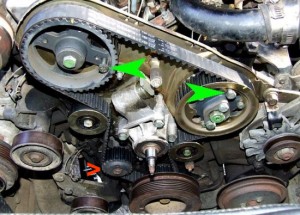 Important Information about Timing Belt
Important Information about Timing Belt
Timing belt is an essential part of a car’s engine because it makes sure that the valves work accordingly through proper coordination. It is so essential for you, as a car owner to find someone who can help you when it comes to adjusting the timing belt. It is essential especially because it should be properly synchronized with the engine valves along with the pistons of the car to enable it to function well. Once the timing belt is improperly installed, there could be possible problems that may be encounter later on.
Do you know that improper setting of the timing belt can lead to collisions of the valve and pistons of the car? Damages may be worse later on if the timing belt hasn’t been properly installed. As a car owner, you need to change your car’s timing belt whenever you have reached 80,000 miles. It is recommended by most car dealers today to make sure that the car will run smoothly and there will be no accidents that may occur while you are on the road. If you are curious about how to properly determine time belt problems and setting, this article will be very helpful to you.
- First thing that you can do is to try to disconnect the battery from the cables. There is a timing belt cover so you need to remove everything that will hinder you from seeing the belt but always be careful about it.
- You need to place wheel chocks over the rear wheels so that there won’t be any movements that will occur. Make sure that the car is properly parked and in neutral mode so that you will have more free access when rotating the crankshaft.
- Take off the belt cover by taking off the bolts of the perimeter. You can do that using a crank pulley. You need to see if the camshaft timing is aligned. If it is not properly aligned, you need to adjust it but make sure that you are knowledgeable in this task.
- The tension bolt needs to be loosening up so that you will be able to move the pulley freely.
- See if the alignment between crankshaft and camshaft are ok. If they are ok, you can just turn complete revolutions of the crankshaft to return it to its proper position. Now you are done, you can change the cover of the timing belt and connect back the accessories along with the battery to its terminal.
- Start the engine now and feel if the throttle is responding accordingly. The engine should run smoothly even in idle mode especially if the timing belt is properly adjusted.
Proper understanding of the timing belt function will make you take care of your car appropriately.
Learn and Understand Exhaust Back Pressure and its Importance
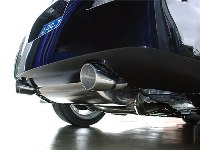 New drivers are not really familiar with the importance of exhaust back pressure and what it is really all about. Exhaust back pressure is the part of the car that limits the flow of the gas within the exhaust system. It compresses and releases the force to go back to its engine. Back pressure is also responsible for adequate use in diesel powered cars to enable the driver to slow down or to even stop with maximum control if needed. This article will help you learn more about exhaust back pressure through the following:
New drivers are not really familiar with the importance of exhaust back pressure and what it is really all about. Exhaust back pressure is the part of the car that limits the flow of the gas within the exhaust system. It compresses and releases the force to go back to its engine. Back pressure is also responsible for adequate use in diesel powered cars to enable the driver to slow down or to even stop with maximum control if needed. This article will help you learn more about exhaust back pressure through the following:
- Back pressure is also used along with engine retarders. These enable the release of compression from the engine. Oftentimes, it is in a slow or heavy manner depending on the need of the driver. This is often used by diesel powered engines because unlike gasoline powered cars, diesel powered cars don’t have built in engine brake system.
- The engine exhaust brake has also something to do with the back pressure because it is one of the kinds of engine retarder that also uses back pressure to make the car stop. This part is responsible in making a resistance over the pistons of the engine that makes the rotation lower. It makes the slowing of the car very much in control every time it stops.
- Having exhaust back pressure on your car offer a lot of benefits because it can help a car to slow down especially diesel powered cars. Whenever you go and drive along the hills, you will have more secured brake and the car won’t roll down as well. The braking components also have longer life span.
Measuring back pressure of the car is not a daunting task because all you have to do is to go underneath the car and position yourself to the exhaust pipe. It can be found just behind the engine. The exhaust pipe is connected to the catalytic converter and to the muffler of your car. You need to screw the end of the psi pressure gauge through the hole and then start the car and read the gauge. You can easily read the pressure clearly when the car engine is in idle mode. The pressure gauge should read 1.5 but not more than 2.75. After seeing it you can now turn off the engine of the car.
Air Filter Issues that must be dealt with
Air filter replacement should be a part of your daily car maintenance. You need to always make sure that whenever you bring your car for tune up, replacing air filter should also be a part of the process especially if you know that you are always driving on dirty roads. Changing air filter of the car is not really a big problem to some car owners but if you are not familiar with it, this article will help you change the air filter of your car. The air filter is specially meant to take off the dirt coming from the engine without it the air flow sensor cannot function well and will be easily filled with debris that may hinder the proper functioning of the combustion chamber. Here are some simple ways that you can use:
- First is to open the hood and find the housing of the air filter of the car. It is usually seen in round form on older cars but square in shape in fuel injected engines.
- There are screws specifically meant to unscrew the clamps of the air filter housing.
- Now remove the old air filter and take off the dirt from the housing. You can use a clean cloth for this.
- You can now replace it with a new one by screwing the new one and then return the housing back to its place.
Changing air filters from time to time can also help in minimizing gas consumption of your car. Do you know that a clean air filter will help you get the maximum performance of the engine and better gas mileage too? A car that has clean air ignites faster than a dirty one. But how will you know if it’s about time to change air filters of the car? Well, that still depends on the brand and model of the car or how often you use the car. If the car is often being used on muddy and dirty road, chances are there is lots of dirt that can be found in the air filter compared to those who just use their car for city driving. It’s essential for you to consider certain conditions as well before you decide to change some parts of the car since you need to spend for it and most parts needs to be replaced accordingly by a professional mechanic.
Know More about Repairing Engine Oil Leaks
Leakage of engine oil is a problem which most of the car owners face at one point or the other. However, most of the automobile oil leaks can be easily stopped in about five to thirty minutes and that too without professional help from an expert car mechanic. The steps involved in repairing the car oil leakage are outlined hereunder:
- It should be firstly verified that whether the engine oil dripping to floor or the ground is surely coming from the automobile engine and nowhere else. This is requisite in order to ascertain that it is not just motor burning oil. It can also prove fruitful to determine where the oil leakage is occurring in the car engine if possible. For example, when the bottom part of engine motor has the maximum amount of oil on it, it implies that the motor valve covers might be the most plausible reason behind the oil leakage. The engine oil leaks can thus be prevented by making sure that the bolts on the valve covers are absolutely tight. This might entail the use of a specialized screw driver such as the socket wrench. This is generally a better option that buying completely new cover gaskets for the valves, as can prove uneconomical. Tightening any loose bolts on the valve cover can prove the most effective in stopping the leak.
- Oil leaks should also be investigated in other areas of the engine. This may necessitate the spraying and cleaning of the possible oil leakage areas with the degreaser or the carburettor cleaner. It should also be verified that he pug bolts on the oil drain are tight and have not been stripped. In case the car runs over a large rock on the road, it may cause puncture holes inside the oil pan. However, the situation may be remedied by making use of properly sized bolts for screwing up the punctured holes. Alternatively, an extra drain plug might also be installed, if desired. Moreover, any existing cracks inside the oil pan or engine block might also be repaired using the steep putty.
- If any the aforementioned leakages are plugged, a socket type of wrench extension should be used to verify that all bolts which attach oil pan and automobile engine are firm.
- Another probable leakage area might be the oil filter due to improper installation. It might also be the case that the oil filter might get bent due to the off road driving of the automobile.
- Sometimes, it might also be the case that the leakage of oil may not stop, merely by a change of the oil or the filter. It may be due to the reason that some unburned fuel might have dripped into automobile oil. Thus, a longer wait in between the oil changes would have resulted in higher ratio of the gasoline to the automobile oil. As gasoline leaks much more effortlessly than thick oil, it might be the reason for the exacerbated leakage of oil.
It should be also kept in mind that usually the replacement of the oil with re-refined as well as re-filtered motor oil is usually not a great idea as it may lead to continued leakage of the engine oil.
